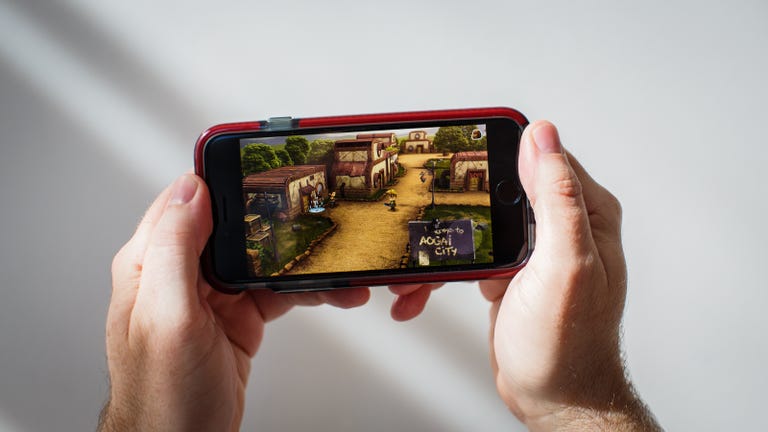 Why You Can Trust CNET
Why You Can Trust CNET Evoland review: A must-have adventure game that evolves as you play
This adventure role-playing game not only has an adventure to complete, but lets you play through the history of adventure games as graphics and control systems evolve throughout the game.
Evoland (iOS|Android) is an action-adventure game whose graphics and gameplay evolve through the history of RPG gaming as you progress through its levels. The game is also very self-aware as it gives humorous nods to many of the most popular RPG games in history.
The Good
The Bad
The Bottom Line
Evoland ($4.99, £3.99, AU$6.49) is the first game I've seen that captures a whole genre of gaming from its roots all the way up to the modern day, and I found it incredibly nostalgic to relive those early gaming technologies. But even if you weren't around for the beginnings of RPG gaming and early graphics, Evoland makes it fun to unlock each technology as you solve puzzles to complete the game's own unique story.
Getting back to the roots
When you start the game there's just a thin strip of the world in two colors on your screen, and you can only move your character to the right. To the right is the first chest you can open, which unlocks the ability to go left. To the left is another chest that unlocks a 2D plane so you can go left, right, up, and down. You quickly realize that the chests unlock gaming technologies, so you're always on the lookout for the next one.
It's not just your movement that evolves, though. You also start the game in silence and only when you find the chest for early videogame music does the telltale digital melody start playing. Later, you'll get 16-bit color and an early form of "3D" called mode 7 (think of tilting the camera in Google Maps with a flat map).
The game continues like this, unlocking technologies as you find each chest, but you're also on a quest of your own in this rapidly changing world. You have multiple puzzles to solve on your journey and plenty of monsters to beat while the story and the technologies progress.
Combat evolution
Another way the evolving technology makes the game fun is the way you fight monsters. In the beginning it's just a sword that lunges forward like you would see in early games such as the original Zelda. Later it switches to a turn-based mechanic as you would see in games like Pokemon and early Final Fantasy games. You'll touch an attack button, then select an enemy, and your character will launch forward to swing his sword, then return to his starting position. Even the turn-based fighting evolves as you play, going from 2D to colorful 3D with textures over time.
Later once you're past the turn-based era, you'll unlock tech that makes it so your sword swings in an arc. Even later, you'll get a combination move with a finishing slam that hits multiple enemies.
The game does a great job of showcasing each era of RPG gaming, but even the early parts of the game are fun because they're reminiscent of all the popular games from the past.
Mixing it up
Where the game really starts to get challenging is when you start mixing the eras. Certain puzzles require that you switch back to the 2D world by hitting a large blue gemstone with your weapon. You'll quickly notice that some objects that may have blocked your path in 3D, don't when you're in the 2D world.
In these sections, the best way through is using trial and error, trying to find which era is the best for completing each part of a puzzle. Though I really enjoyed the game up until that section, it was there that I really had the "wow!" moment that made me think this game was special.
The controls are not perfect
The thing about action RPGs is you often have to be precise in your movements. As an example, when fighting certain monsters, they'll block every hit if you try to attack them head on. This means you have to circle around behind them before they turn towards you again and try to get off a quick hit.
Without a gamepad or joystick, it's hard to be that agile. Fortunately with some practice, the onscreen gamepad gets somewhat easier, but I still found it pretty frustrating against several of the monsters.
Conclusion
Evoland is in a class by itself because, while it is an RPG game by definition, it showcases the history of RPG and all the ways developers used the technologies they had available to give the best experience. Though the early parts of the game are low-tech, the game is still immensely enjoyable as you explore each new technology.
As is true of most action RPGs, the iPhone touchscreen is not ideal for precise control. You will probably have some frustrating during these parts, but continuing on is worth the temporary pain.
In the end, this game is a must-have if you grew up playing a lot of the classics. But I still think it will be fun to newcomers because the developers did an excellent job of showing how RPGs evolved over the last few decades.


